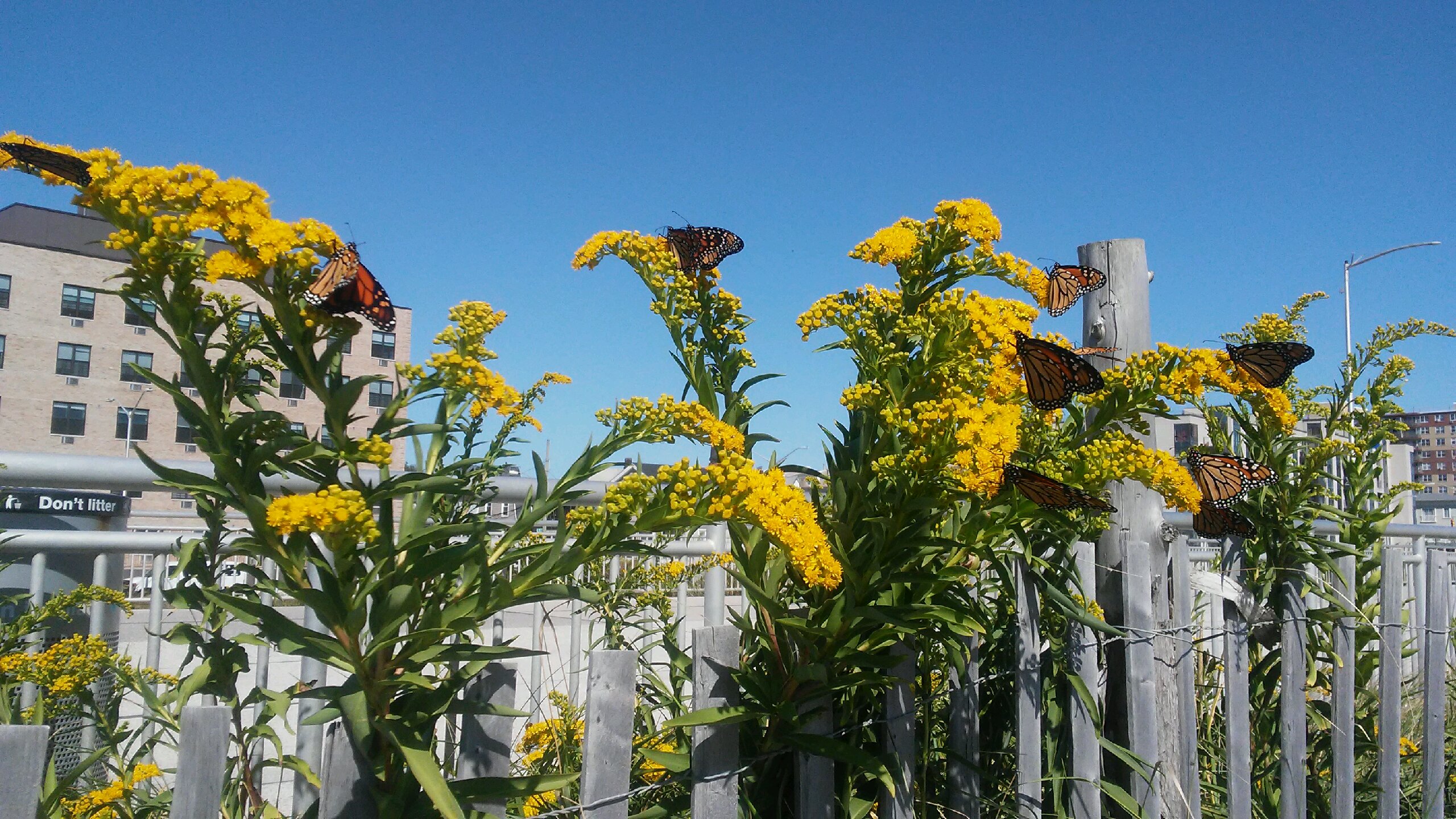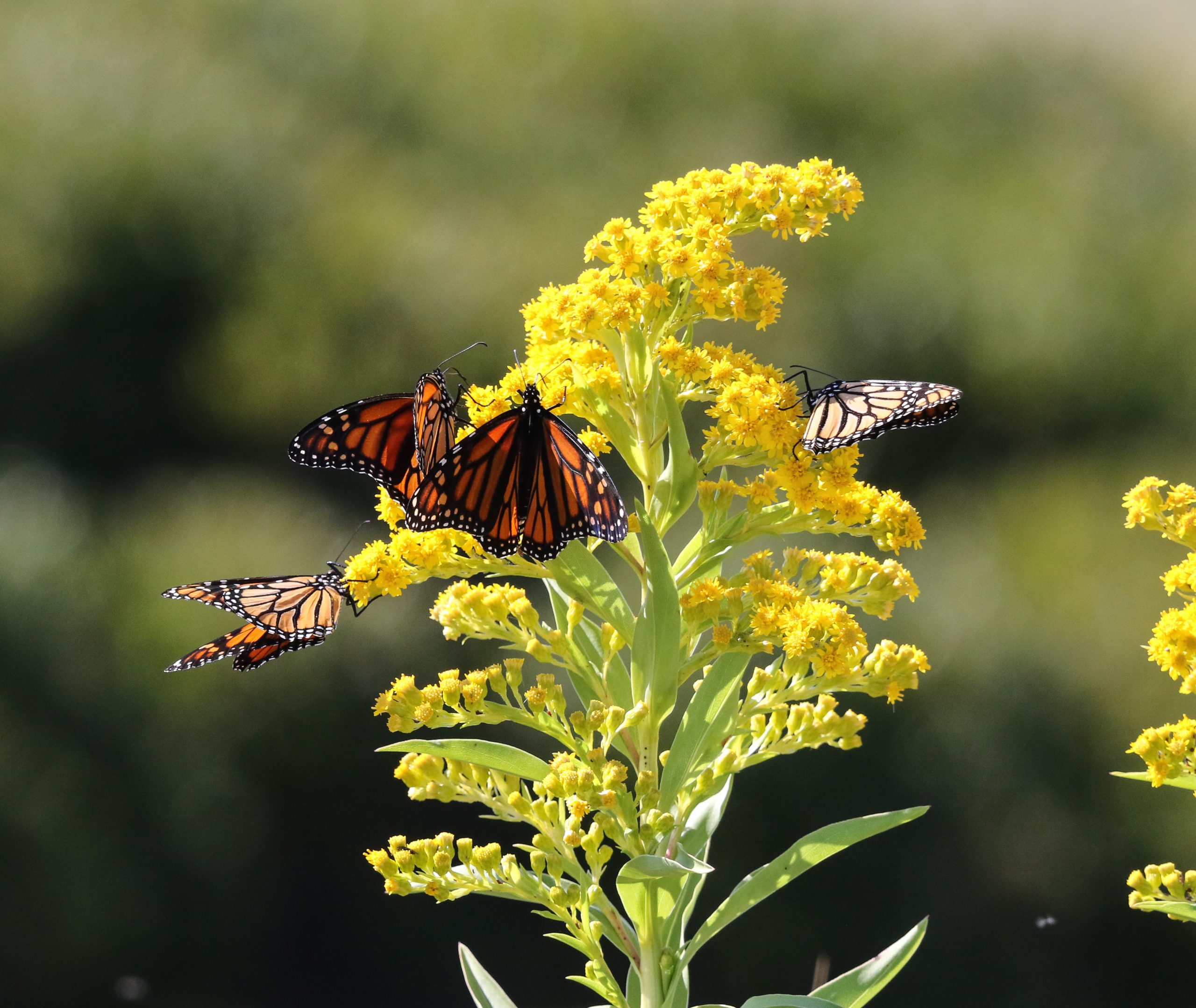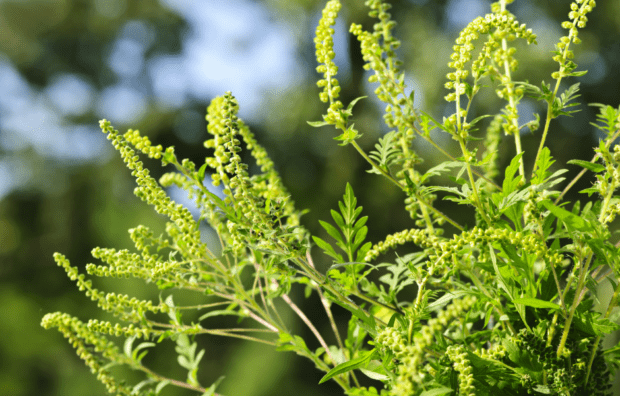We have much more to do and your continued support is needed now more than ever.
The Goldenrod Allergy Myth

Goldenrod blooms are an autumn delight — both for human admirers and wildlife visitors. Their sunny yellow flowers add beauty and interest to the late summer and early fall landscape and they are a magnet for native bees, butterflies, and other pollinators when many other flowering plants have finished blooming for the year.
As dependable as the pollinators that will be attracted to your garden when you plant goldenrod is the myth that these native plants are the main culprit behind seasonal “hay fever” allergies. Hearing this misconception repeated over and over is disheartening when you know that this isn’t true. So why does goldenrod get such a bad rap?

Two Different Kinds of Pollen
Understanding why goldenrod gets blamed for hay fever allergies starts with understanding the two different kinds of pollen. Most species of flowering plants depend on either animals or wind to disperse their pollen.
Animal-pollinated plants
Animal-pollinated plants usually have showy, colorful flowers that lure bees, wasps, beetles, flies, hummingbirds, and other animals to them with the promise of sugary nectar or protein-rich pollen. Their pollen grains are large and sticky, designed to adhere to the bodies of those animal pollinators so that the animals can disperse them to the next flower and fertilize it. The pollen from these animal-pollinated plants, including goldenrod, doesn’t fly through the air so we don’t usually inhale it — which means goldenrod is not the source of our seasonal pollen allergies.
Wind-pollinated plants
In contrast, wind-pollinated plants have pollen grains that are very fine and light and designed to float through the air in even the slightest breeze. They don’t have showy flowers because they don’t need to attract animals to do their pollination. Most of our seasonal pollen allergies are caused by these plants that rely on the wind to move their pollen from flower to flower. It’s wind-pollinated plants, notably ragweed, that are primarily responsible for late summer and early fall hay fever in much of the United States.
It is certainly possible to be allergic to goldenrod pollen. There is some research that suggests that goldenrod pollen contains a high latex content, and that goldenrod pollen allergies may be related to latex allergies. Ragweed, a wind-pollinated plant related to goldenrod, is commonly culprit when folks assume they are allergic to goldenrod because they get hay fever. As it turns out, those allergic to ragweed are indeed more likely to be allergic to goldenrod because of the plants’ close relation.
However, it has long been known that goldenrod pollen is an insignificant factor in terms of the total amount of potentially allergenic pollen in the air. This study shows that maple, elm, oak, birch, timothy grass, June grass, and orchard grass are instead the primary culprits of hay fever, in addition to ragweed. The common conclusion among allergen researchers seems to be that although allergies to goldenrod are possible, one would need to be in physical contact with the plant to see significant effects, as its pollen is not distributed on the wind. In other words, someone with a goldenrod allergy should be fine in the presence of goldenrods so long as they aren’t burying their faces in the flowers themselves, but may still need to be careful around ragweed.

So why does goldenrod get blamed for causing our allergies when it’s really ragweed? Ragweed blooms at the same time as goldenrod. Unlike goldenrod, which is much showier and more conspicuous with its bright yellow flowers, ragweed has nondescript flowers like most wind-pollinatod plants that most people don’t notice. So when people start sneezing and they see the blooming goldenrod, they assume that’s the plant that’s responsible. The inconspicuous ragweed flies under the radar and the goldenrod inaccurately gets the blame, and that has gotten passed on through word of mouth to the point where it’s a widespread, but incorrect, belief.
Goldenrod is Great
Goldenrod is actually fanastic native plants to have around. There are around 100 goldenrod species in the genus Solidago native to North America, so no matter where you live there’s a native species for your region that would be a great addition to your garden.
In fact, goldenrods are considered “keystone plants,” species that have extreme importance to the wildlife. Goldenrods support dozens of butterfly and moth species by serving as their caterpillar host plants. Goldenrods also support dozens of native bee species that are pollen-specialists and can only feed their young the pollen of certain native plants. Rapidly disappearing monarch butterflies rely on goldenrod nectar to fuel their long fall migration down to Mexico. Many native bee species nest and overwinter in the stems of herbacious perennials such as goldenrod, and many songbirds species feed on the seeds of goldenrod. So don’t cut back goldenrod seedheads or stems after the flowers stop blooming — leave them standing through winter.
And of course, goldenrod brings fantastic seasonal color to our gardens and landscapes at a time when most other flowers have long-finished blooming.

Get a list of the species of goldenrod native to your zip code with our Native Plant Finder.
Learn how many species of butterflies, moths and native bees rely on goldenrod in your region.
Get goldenrod and other native plants delivered to your door by purchasing one of our Native Plant Collections.





















